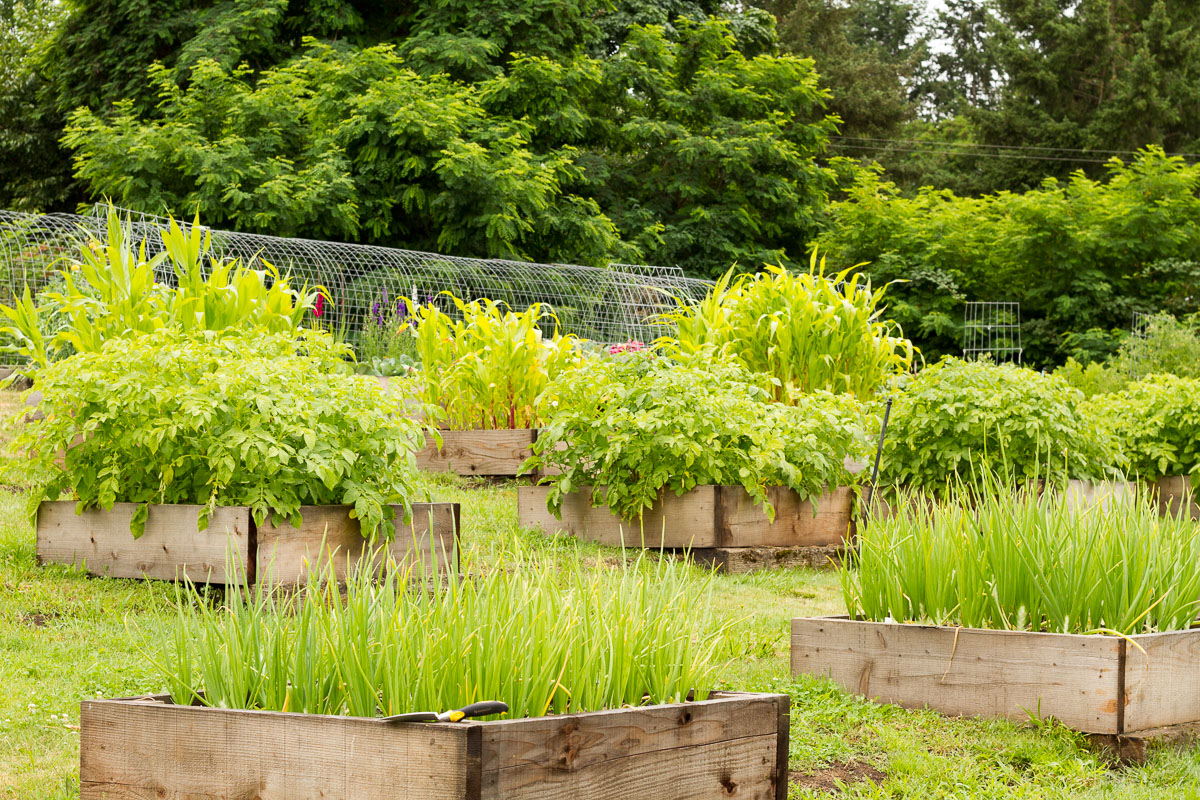
I’ve been waiting to write this post for over a year! Every spring break, instead of going on a fabulous vacation, we spend the time getting our backyard garden ready. First we trim and weed, pull out old, dead plants that didn’t get rounded up in the fall clean-out, and fix broken boxes and trellises. We add fresh soil to any boxes that need a little more, and add fertilizer and amendments to all the boxes to get them ready for another growing season.
Last year, I thought it would be fun to write about how our garden is laid out, how we rotate crops, etc, but pictures of boxes full of bare dirt aren’t very fun to look at! So I waited until the beds were full of blooms and lush greenery over the summer and took a ton of pictures, then squirreled them away until today.
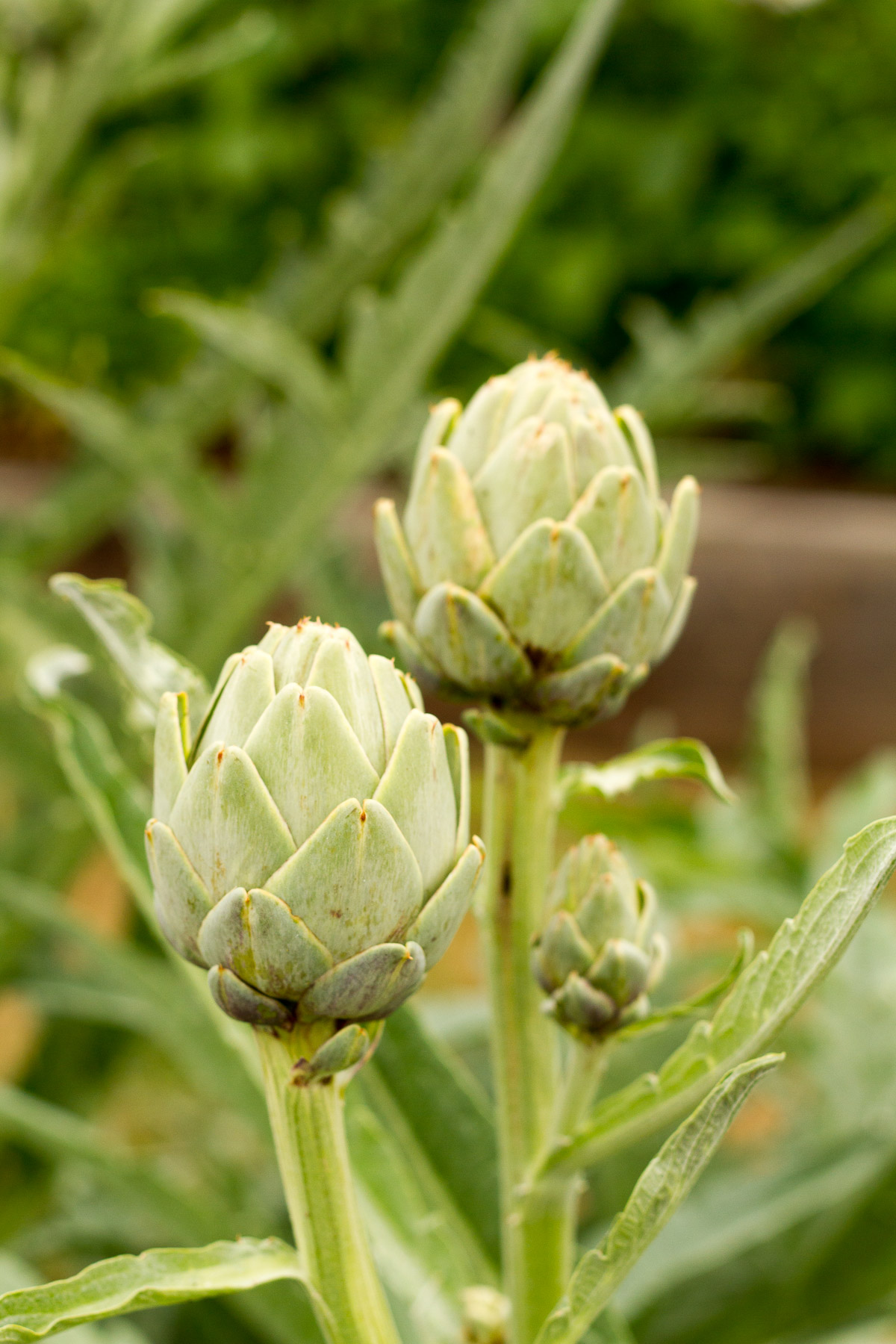
This garden has been a work in progress ever since we moved in. Over the past five springs, we’ve tinkered with it little by little, and I think we finally have a workable design. Because the garden and orchard are on a slight hill, we spent the first and second springs plowing and terracing rows. The third spring, we discovered that the rows weren’t going to work because spring here in the Pacific Northwest is super rainy, and rain means mud. The tractor was too heavy and got stuck in the mud, leaving huge, mud-filled ruts wherever it drove. The mower got stuck in the mud too. Even the walk-behind tiller, which is really lightweight, got bound up in all the MUD. As luck would have it, the Christmas right before that third spring, my husband got me all the makings of a cut flower garden. He bought me tons of bulbs and seeds, and ordered raised bed kits and dirt. We had no trouble getting those boxes put together, installed, and planted, even with all the mud and rain. So we decided to transform our long, terraced rows—rows that we spent two springs putting in!—into rows of raised beds. It took us two springs to get all the boxes purchased, put together, and installed. Last year was our first year with a complete garden of raised beds, and it went beautifully!
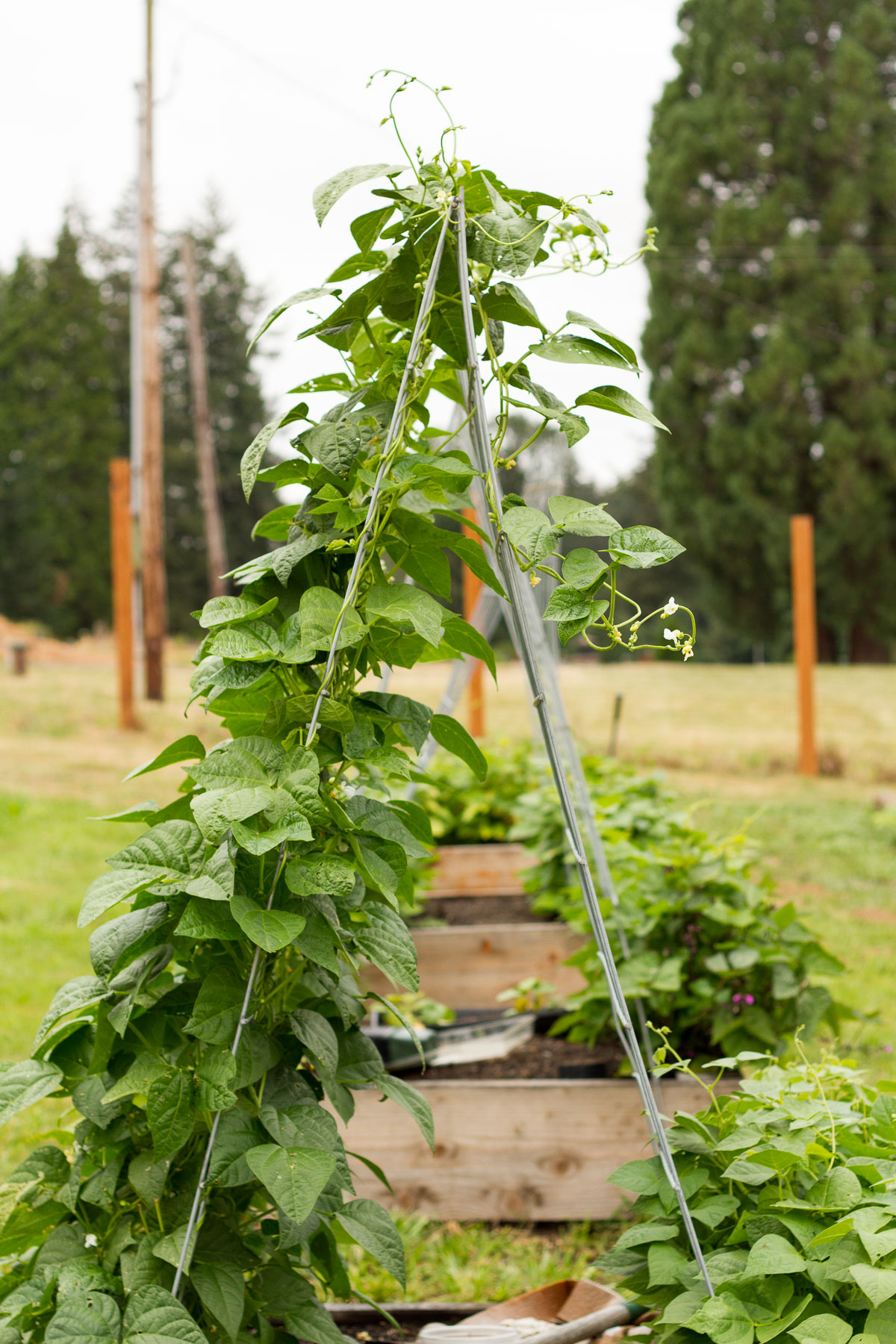
We have found a few great reasons to love raised beds, even in a garden as big as ours. It’s much easier to stay on top of weeds in a raised bed. I don’t think they get as many weeds in the first place, and then, because they have very definite boundaries and are fairly small areas, it’s pretty easy, mentally speaking, to weed a few boxes at a time. We don’t look at our garden and think, “Ugh, how are we ever going to weed that??!!” Instead, we weed a box or two while we chat, ask each kid to weed a box, etc, and it just magically gets done without feeling like a chore. Raised beds make mowing a breeze. Because they’re a foot higher off the ground, they make planting and harvesting a little easier. And it’s actually proven that you can grow more per square foot in a raised bed than you can in the ground.
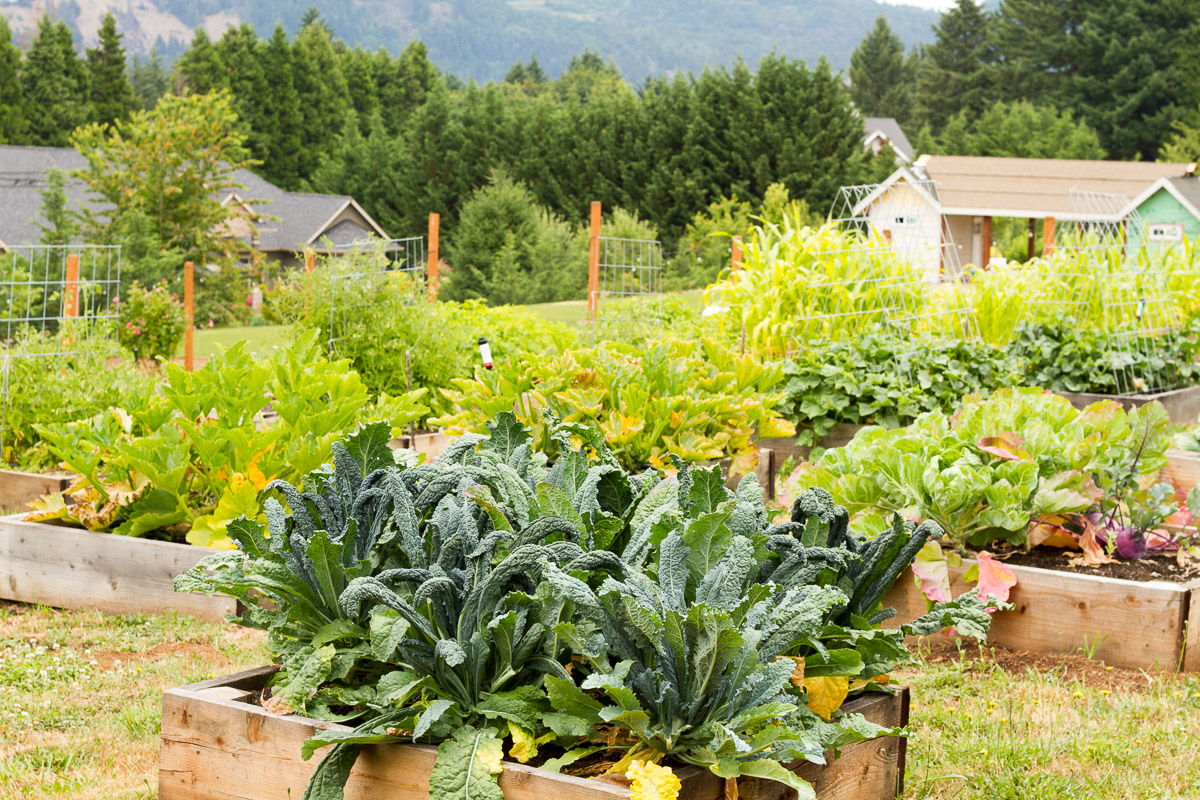
Now, here’s how our garden is laid out. There are seven long rows of beds. The top row at the top of the hill is all flower boxes. This row is set up differently than all the others. It’s actually two rows of small boxes laid side by side all the way down the length of the garden, with trellis tunnels running between them. The second row is now mostly strawberries, and the crops don’t rotate. The other five rows are basically divided into 10 sections, and these rotate clockwise every year. So this year, the row just below the strawberries has five boxes for corn, and five boxes of peas, radishes, and lettuce. Next year, the corn will move to the spot that the peas are in right now, and potatoes will move up into the corn’s spot.
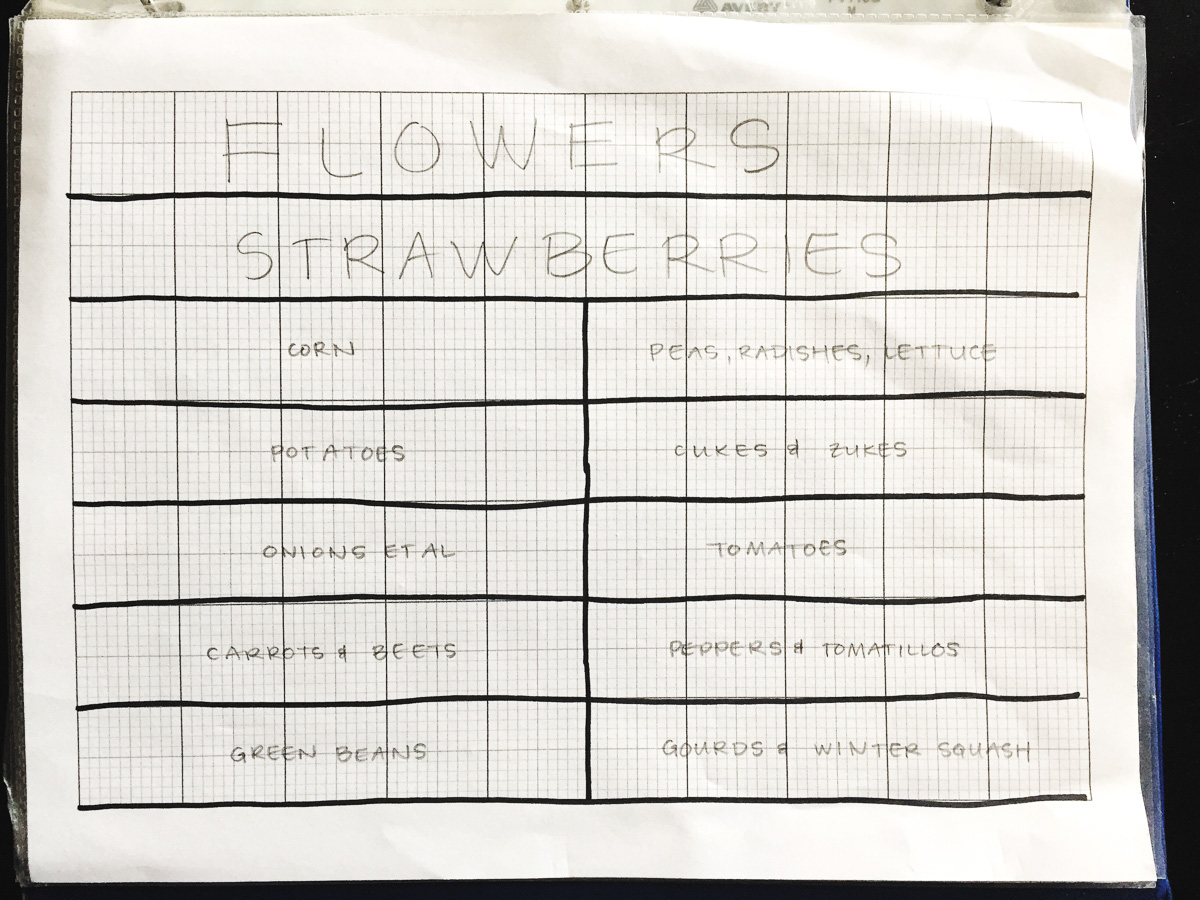
Every year, I print up a new blank garden map. I write down what general groups of plants are going where, and then we fill in specific varieties as we plant them. Here’s last year’s map:
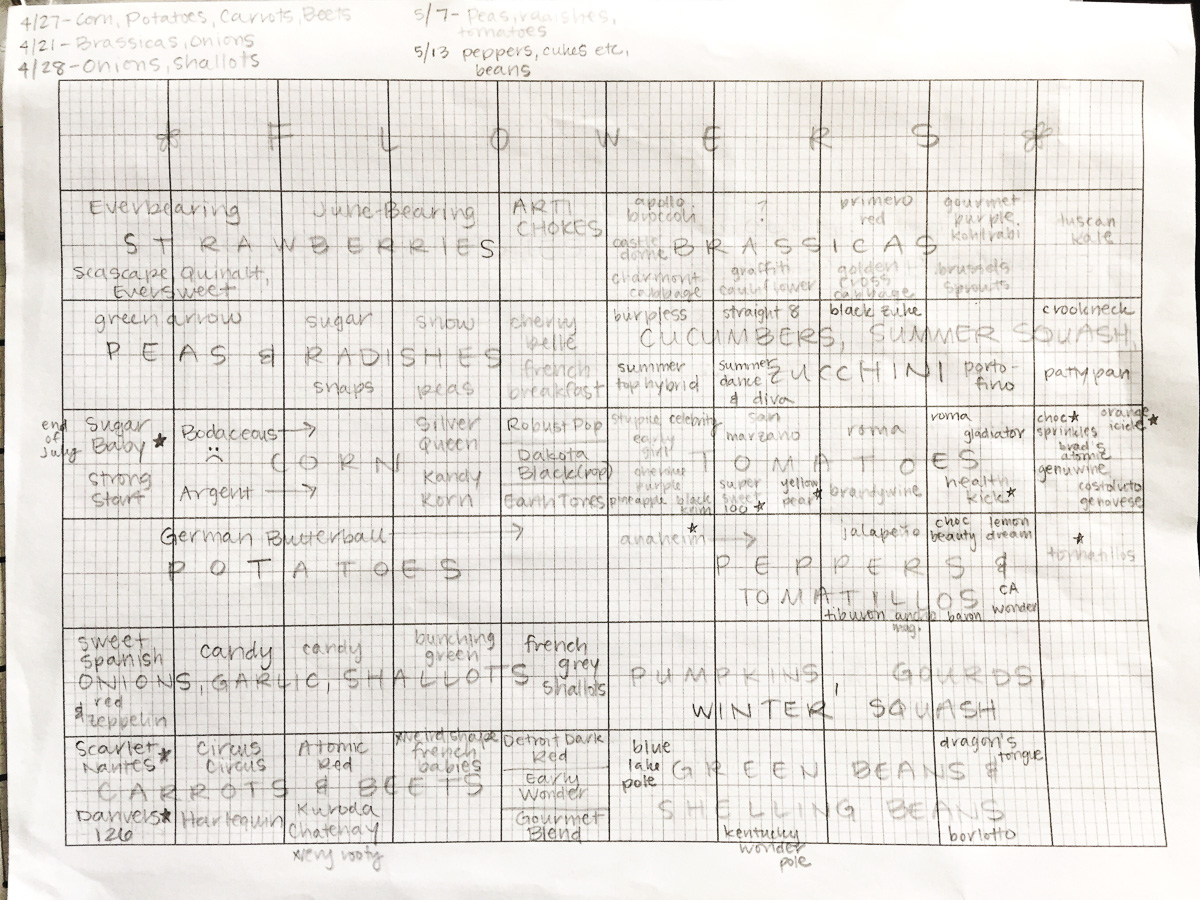
This year, we’ve already planted carrots, beets, onions, potatoes, peas, radishes, and lettuce. At the end of May, we’ll plant corn, cucumbers, zucchini and summer squash, tomatoes, peppers, tomatillos, pumpkins, and green beans. What are your favorite things to grow in your garden?
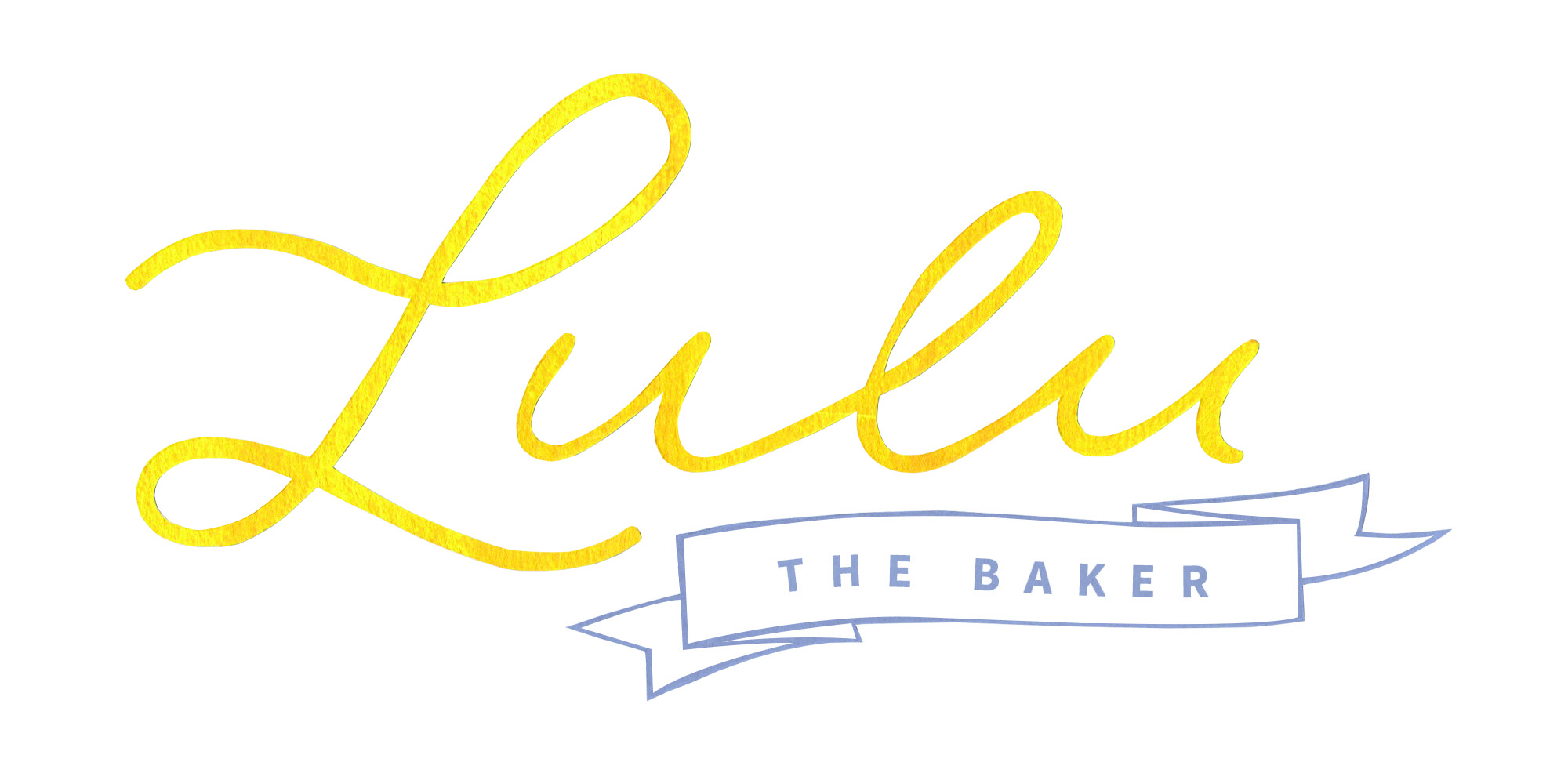

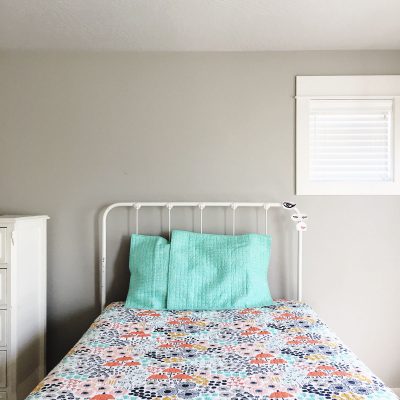
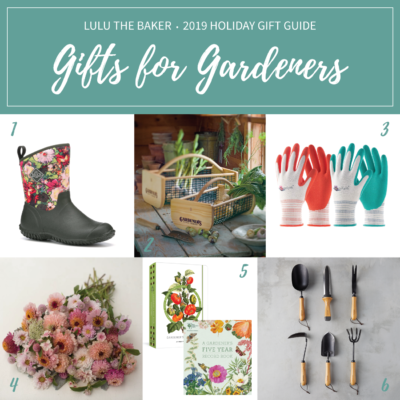

How big are the boxes?
Hi Melissa! The veggie boxes are 4x4ft. The flower boxes are 2x4ft. They’re made of rough cut 2×12″ redwood and come as a kit that we put together. Ours are from a local company called Redwood Northwest, but you could easily find other kits online or even make your own using rough cut 2×12″ cedar planks. Here’s a link to the company that we got ours from; our boxes are the ones at the very bottom of the page: https://redwoodnorthwest.com/products/redwood-planters-raised-garden-beds/
What kind of fertilizer do you add to your raised beds each year? Is it the same fertilizer that you add to your raspberries?
Hi Joyce! This year, we added bone meal and compost to each veggie box and worked them into the top few inches of soil before planting anything. For all the veggies, we used a generic everything garden fertilizer after planting. We have a separate fertilizer for our citrus trees, one for our roses and flowers, and one for our fruit trees and bushes. They aren’t fancy or hard to find. They’re just the ones from our local garden center, and they’re all labeled. We also have bunnies and chickens. We put rabbit poop on the raspberries, blackberries, and fruit trees, and chicken poop mixed with pine shavings on the blueberries.
Hi Lulu, luv your blog, can you give me some advice on trellises. I never know what to buy or how to use them correctly. I know it sounds weird but I think I am intimidated by trellis. Thank you.
Hi Tina! Trellises can be frustrating! We are still working on figuring out the best trellises for everything in our yard. For the flower tunnel, we use hog panels that we’ve bent into upside-down U shapes. Very easy. We’ve tried everything under the sun for tomatoes and still haven’t found something we like that works! This year, I think we’re going to buy the inexpensive metal cages that fold out into a square column. I’ll let you know how it goes. For peas and beans last year, we cut some hog panels in half, then lashed them back together to make tall A frames. They looked pretty and worked really well. But I love the look of teepee trellises made of bamboo and jute twine, so we made those for the peas this year. This makes me think I should do a post about trellises, yes?! Don’t let trellises intimidate you! Just remember that if something doesn’t work out the way you wanted it to, you can pull it out next year and try something different.
You have a very beautiful garden. Great work!
Thank you!